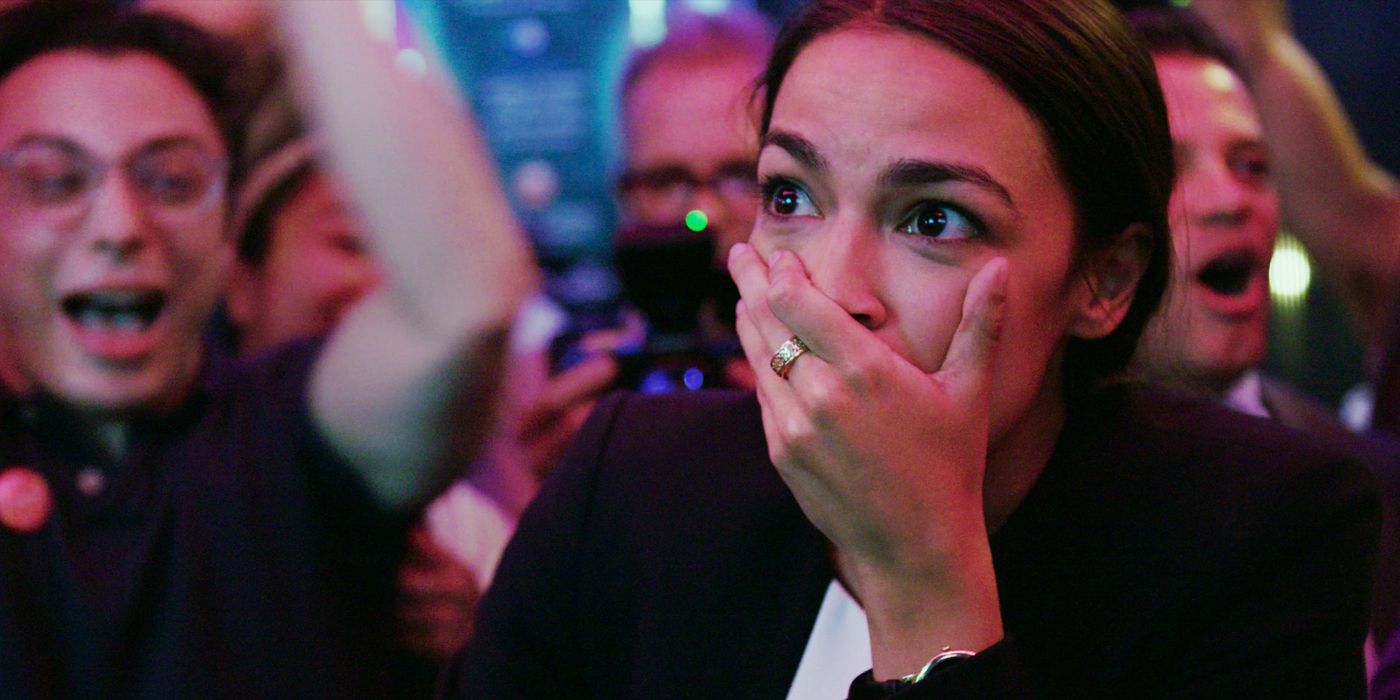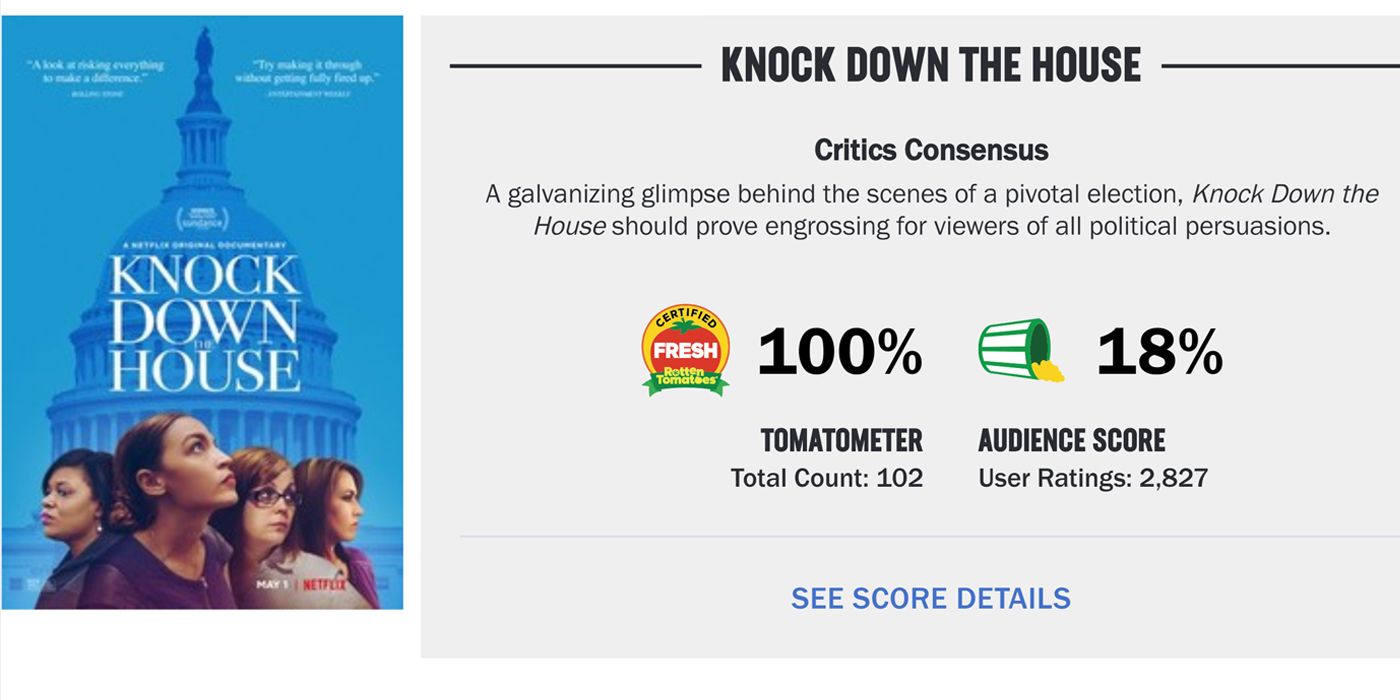The gap between critic and audience ratings — as well as either end’s credibility — has been a point of debate for as long as cinema has existed. Likewise, Rotten Tomatoes has been no stranger to controversy for its method of charting reviews of movies, and more recently for its bumpy moderation of trolls discussing divisive films.
Lifestyle website Rave Reviews recently took a comprehensive search through Rotten Tomatoes’ encyclopedic archives to find the movies with the biggest divides between critics and general audiences. Out of hundreds of films from the past 40 years documented on the website, the most controversial movie of the past four decades is Netflix’s Knock Down the House, a political documentary centered around four Democrat women’s campaigns through the 2018 American primaries. While holding an impressive 100 percent critics score, only 18 percent of audience reviews were positive.
Though few movies have ever split fans' reactions as much as Star Wars: The Last Jedi did in 2017, the eighth entry in the franchise only placed fifth on the list at a 48 percent difference between critics and audiences. Above The Last Jedi were American Outlaws (54 percent difference), Hale County This Morning, This Evening (60 percent difference), Hannah Gadsby: Nanette (78 percent difference) and Knock Down the House (82 percent difference).
Given the quantity of divisive franchise films that have released in the last decade alone (eight of the top ten movies and sixteen of the top twenty on the list were from the 2010s), the documentary’s placement atop the list is at once surprising and not surprising. There’s been a terrible trend of some “review bombing” media they don’t agree with politically. While critics writing for publications are generally trustworthy, certain segments of the masses -- particularly misogynistic trolls -- can pump out scathing reviews without being subject to honesty or regulation, often leading to these bloated gaps in scores.
Digital Home Entertainment Sales Rose Nearly 50% in March
Amongst three other progressive Democratic women, Knock Down the House prominently features now-U.S. Representative for New York's 14th congressional district Alexandria Ocasio-Cortez, who has found herself the unfortunate receiver of vitriol due to her outspoken presence across social media online. A quick look at some of the other top four movies continues this trend across the films’ due to their political undertones. Hannah Gadsby’s Nanette special leans heavily on political commentary, for one, while Hale County follows the lives of black people in the Alabama county through an artistic, free-flowing lens. Rian Johnson’s subversive narrative aside, The Last Jedi has also been the subject of unfairly negative reviews due to its racially inclusive cast and female protagonist. Oddly, though, at only a 30% difference, last year’s Captain Marvel is nowhere to be found on this list, despite being another such film targeted by review bombings.
While troll reviews could be blamed for a good portion of these critical and audience gaps, another reason could be attributed to mismarketing as was the case for the list’s thirteenth spot, It Comes at Night. Sitting at a 43 percent difference, Trey Edward Shults’ movie was sold as a thriller-style horror movie despite being more of a psychological slow burn, a criticism that has popped up more than once in regards to A24’s experimental slate of films.
Other notable movies in the top twenty include Dreamworks’ Antz, a less accessible insect-based family movie than its competition in Pixar’s A Bug’s Life, and Robert Rodriguez’s Spy Kids, which, despite featuring a largely Latino cast, was disparaged by audiences for being too cheesy. Of the twenty films on the list, only three had a critical score lower than the audience’s. Those were American Outlaws, Forsaken and I Am.
It’s important to note Rave Reviews did not average out individual reviews’ scores as advertised, but rather took Rotten Tomatoes’ own ratings as its final scores. As such, the numbers should be read as averaged percentages of whether critics/audiences found the movie “Fresh” or “Rotten” as opposed to averaged total numerical scores between 0 to 100. An 100 percent, for example, does not mean that one side found a film to be perfect on all fronts, but rather that 100 percent of critics or audiences found it to be “Fresh.” Still, these disparities are quite telling when it comes to just what some segments of the general theatergoing audience loudly choose to hate.
Theater Owners Slam Universal Over Trolls World Tour Release Strategy


